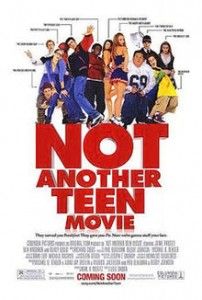Not Another Teen Regulation Bill
By KATY GRIMES
According to legislators, teenage boys in California are violent. Therefore, only an Assembly resolution can save the unsuspecting teenage girls from the inevitable violence.
February 2012 has been dubbed “Teen Dating Violence Awareness and Prevention Month.” And Assemblyman Ricardo Lara, D-Bell Gardens, has come to the rescue with ACR 101, to “encourage all Californians to observe Teen Dating Violence Awareness and Prevention Month with appropriate programs and activities that raise awareness about teen dating violence and promote healthy teen relationships in their communities.”
Never fear, the State Legislature is here.
“It’s a growing problem,” said Lara, the author of ACR 101, during Tuesday’s Assembly session.
But not all legislators agree with the resolution.
In fact, some have said that much of the teen bullying and violence is hyped.
Legislating Peaceful Relationships
Assemblyman Chris Norby, R-Fullerton, wasn’t buying it, and called Lara out. “Violence among teens is down 50 percent since 1995,” Norby said on the floor of the Assembly Tuesday.
Norby said that adding more school programs to deal with teen violence adds no academic value, and does nothing other than to “stigmatize what often is the give-and-take in relationships.”
“There is no outbreak of violence, no epidemic,” Norby added.
Norby addressed the fallacy of the resolution which, according to Lara, is a conduit for “additional resources for training teens.”
 Teen Violence Resources
Teen Violence Resources
One of the biggest promoters of teen violence programs is the California Adolescent Health Collaborative, which receives funding from the Maternal, Child and Adolescent Health Program, Center for Family Health, California Department of Public Health, and the Office of Juvenile Justice and Delinquency Prevention, U. S. Department of Justice.
The California Adolescent Health Collaborative, “a project of the Public Health Institute, is a public-private statewide coalition of individuals and organizations that works to increase understanding and support of adolescent health and well-being in California,” the website states.
“Over the years, the CAHC has received support from the California Family Health Council, the California Wellness Foundation, the Sierra Health Foundation, Lucile Packard Foundation, MCAH Program, California Department of Public Health, Compton Foundation, McKesson, Office of Juvenile Justice and Delinquency Prevention, U.S. Department of Justice, and the California Endowment.”
A major part of what CAHC does is health related. CAHC also hosts the California Adolescent Sexual Health Work Group 2008 Data for California Adolescent Births, AIDS, STD.
The list of health-related subjects however, are all issues that are traditionally parental responsibilities, and are highly suspect as publicly funded programs in public schools and publicly funded health centers:
Latino adolescents in California’s rural counties: a snapshot of health status
Impact of Social Media on Adolescent Behavioral Health in California
Promoting the Sexual and Reproductive Health of Adolescents in Foster Care
Teen Dating Violence: Keeping California Adolescents Safe in Their Relationships
Mental Health in Adolescence: A Critical Time for Prevention & Early Intervention
Adolescent Health Brief: Nutrition and Physical Activity
California Youth Need School-Based Health Centers!
Are you Talking with your Teen?
Adolescent Oral Health Fact Sheet
More Programs
ACR 101 states that it would “encourage all Californians to observe Teen Dating Violence Awareness and Prevention Month with appropriate programs and activities that raise awareness about teen dating violence and promote healthy teen relationships in their communities.”
The bill was light on analysis, but did include “data” from the Liz Claiborne 2009 Parent/Teen Dating Violence Poll, which found “approximately one in three adolescent girls in the United States is a victim of physical, emotional, or verbal abuse from a dating partner, a figure that far exceeds victimization rates for other types of violence affecting youth.”
But the Teen Dating and Violence poll, “Teen Dating Abuse Report 2009: Impact of the Economy and Parent/Teen Dialogue on Dating Relationships and Abuse,” only led to a website called “Love is Not Abuse.” The study, supposedly conducted by Teen Research Unlimited, also led nowhere. I can’t find any poll, and none of their 2009 news or press releases include a report on teen dating abuse.
Locating actual data on teen violence is a big problem. The CAHC website data page came up empty, with a “page not found” message. The National Institute of Justice, the federal organization that disseminates information, training and “data,” came up weak as well. There was plenty of narrative about the issues, but no identifiable data.
The National Youth Violence Prevention Center is just as fuzzy, with data compiled by the Centers for Disease Control and Prevention, and the U.S. Department of Health and Human Services in a program called STRYVE — “striving to reduce youth violence everywhere.”
The CAHC offers the following topics for educators: Minor Consent and Confidentiality, Adolescent Relationship Abuse, Sexual and Reproductive Health of Youth in Foster Care, Positive Youth Development, Adolescent Development, Core Competencies for Providers of Adolescent Sexual and Reproductive Health, and Integrating Behavioral Health into Primary Care.
It appears that Norby is right. While any violence between dating teenagers is too much, a cottage industry was created under the guise of a “public/private partnership” using teen violance as the catch-all subject. “Public/private” is always the code words for ways for government to spend taxpayer funds on non-essential services.
The disclaimer on the STRYVE website explains everything: “Disclaimer: STRYVE, a youth violence prevention initiative, provides this information as a public service only. The views and information provided about and in the content available through this website, www.safeyouth.gov, do not necessarily represent the official views of the U.S. government, the U.S. Department of Health and Human Services, the Centers for Disease Control and Prevention (CDC), or STRYVE.”
According to Norby, with California public school students dipping to the lowest performance in the country, non-academic programs have “doubtful academic value.”
Related Articles
Gov. Brown campaigns for rich public-employee unions
Commentary Oct. 31, 2012 By Mark Cabaniss If you have the stomach, listen to Jesuit seminary dropout (1957) Gov. Jerry
Unions trounced in Wisconsin, California
JUNE 5, 2012 By Steven Greenhut The AP headline declared, “Wisconsin voters divided on governor, bargaining,” but that piece reviewing exit
Californians approve of Brown, Obama and CA — country, not so much
A majority of Californians approve of the job Gov. Jerry Brown is doing and think the state is on the right




